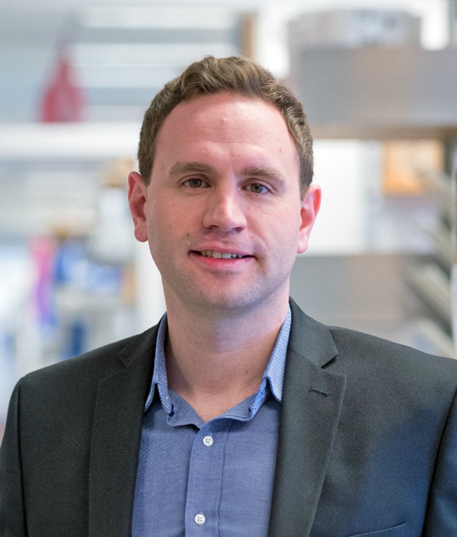检测到您当前使用浏览器版本过于老旧,会导致无法正常浏览网站;请您使用电脑里的其他浏览器如:360、QQ、搜狗浏览器的极速模式浏览,或者使用谷歌、火狐等浏览器。
 下载Firefox
下载Firefox
检测到您当前使用浏览器版本过于老旧,会导致无法正常浏览网站;请您使用电脑里的其他浏览器如:360、QQ、搜狗浏览器的极速模式浏览,或者使用谷歌、火狐等浏览器。
 下载Firefox
下载Firefox
金沙威尼斯欢乐娱人城定量生物学中心
学术报告
题 目: Selective Assembly of Disordered Proteins Intro Discrete Subcellular Condensed Phases
报告人: Matthew C. Good, Ph.D.
Associate Professor, Cell and Developmental Biology, Bioengineering, University of Pennsylvania
时 间: 10月29日(周二)13:00-14:00
地 点: 吕志和楼B101
主持人: 齐志 研究员
摘要:
Cells subcompartmentalize biochemical processes to enhance the rate and fidelity of these reactions. Distinct cellular functions are carried out inside membraneless compartments including nucleoli, nuclear speckles, stress granules and germ granules. These biomolecular condensates are heterotypic assemblies often comprised of disordered polypeptides and RNAs, or other multivalent polymers. Proteins harboring intrinsically disordered regions (IDRs) predominate in mesoscale condensates. However, it is poorly understood whether IDR sequence alone can dictate the formation of distinct condensed phases and the extent to which selectivity can be tuned by polypeptide sequence, valency and the presence of client proteins. Focusing on stress granule related factors, we identified pairs of IDRs capable of forming spatially distinct condensates when expressed in cells. When reconstituted in vitro, these special IDR pairs do not co-partition, suggesting condensation specificity is encoded directly by the polypeptide sequences. Through computational modeling and mutagenesis, we identified the amino acids and chain properties governing homotypic and heterotypic interactions that direct selective condensation. Alteration of specific amino acids is sufficient to break condensation specificity and promote promiscuous co-assembly. Selective assembly and partitioning of our model IDR peptides is conserved across a variety of biochemical contexts and cellular environments, including in the absence of RNA or cytosol and in a variety of cell types, suggesting the portability of these findings. By introducing surfactant proteins these immiscible IDRs can form multivalent assemblies, providing a framework for understanding and engineering the formation of multiphase membraneless organelles. These new results reveal principles that may direct subcellular organization of IDRs into specific condensates and an IDR code that can train machine learning models to predict IDR localization.
报告人简介:
Dr. Matthew Good received a PhD in Biochemistry from the University of California San Francisco, working in the laboratory of Wendell Lim, where he characterized the role scaffold proteins play in directing cell signaling. As a Miller Fellow at UC Berkeley, he was co-advised by Rebecca Heald (MCB) and Dan Fletcher (Bioengineering). There he developed a synthetic cell platform to investigate organelle size scaling in the context of early embryo development. Dr. Good started his independent research lab at the University of Pennsylvania in 2015, with a primary appointment in the Department of Cell and Developmental Biology and a secondary appoint in the department of Bioengineering.
His laboratory is broadly interested in subcellular compartmentalization, including condensation of proteins and RNAs into mesoscale assemblies and formation and scaling of organelles in early embryogenesis. A major focus of the group is understanding mechanisms that control the spatial organization and functional insulation of biochemical reactions within a cell and the self-assembly of micron size subcellular structures. An emphasis of the lab is building new tools for cell and developmental biology and for applications in synthetic biology and cellular engineering with a focus on the long-term goal of achieving programmable control of cell decision-making.
